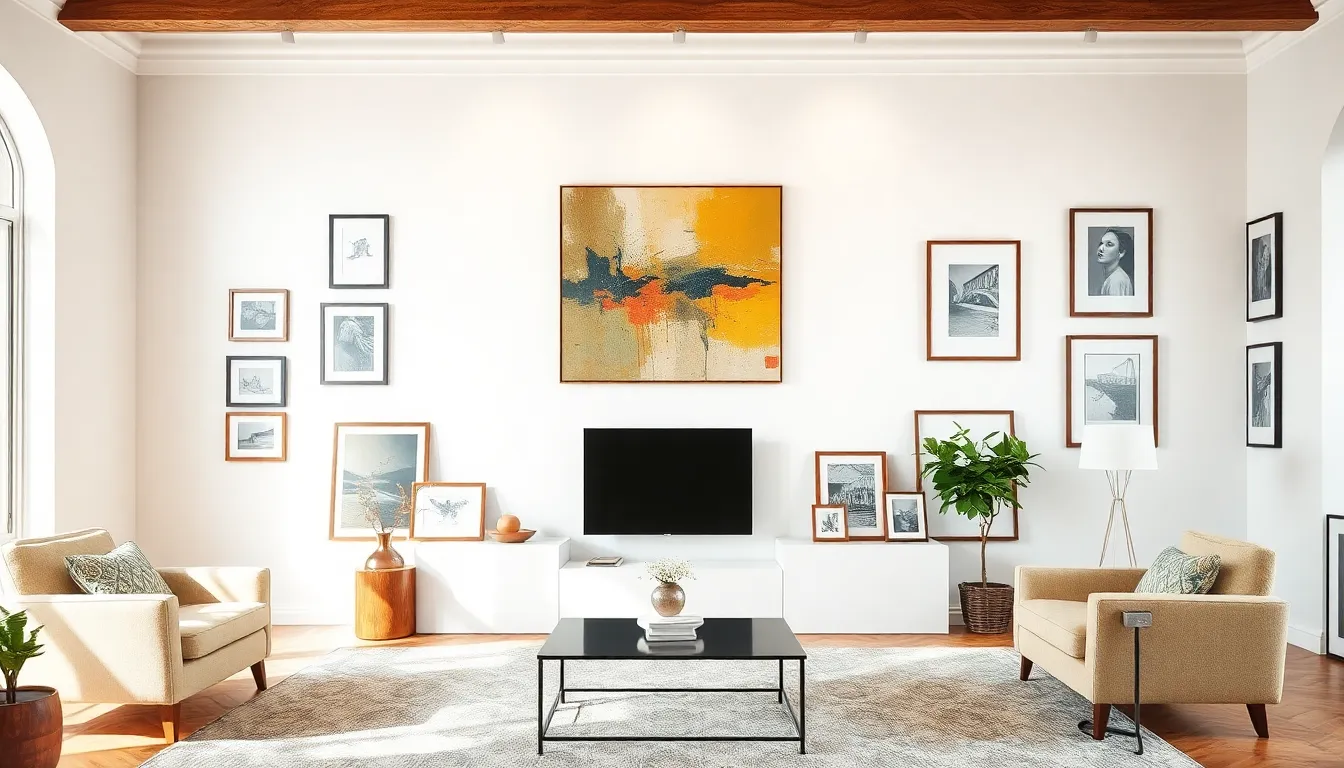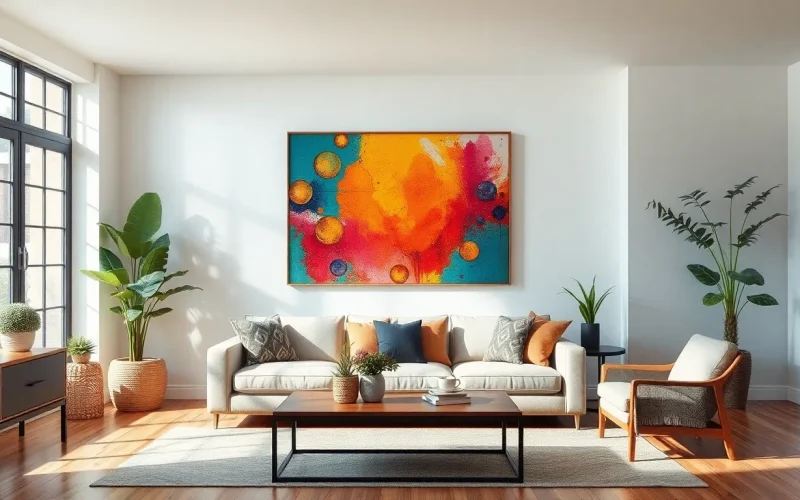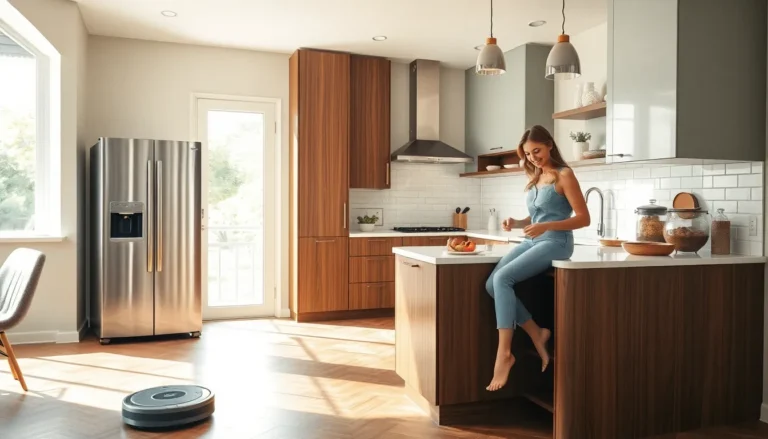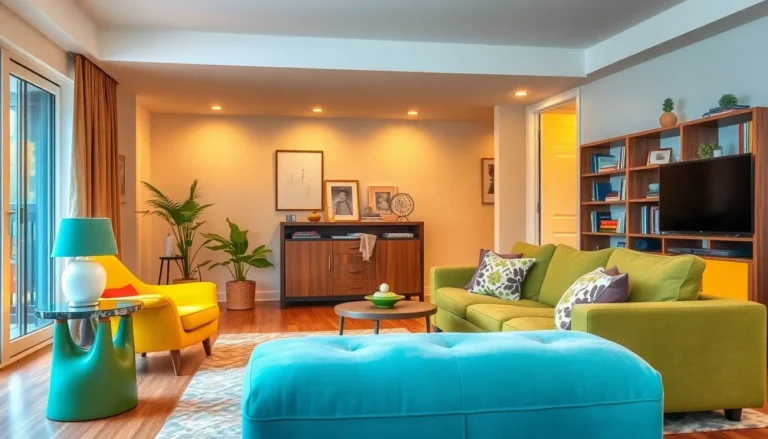Table of Contents
ToggleArtwork placement can make or break a room’s vibe. Imagine walking into a space where every piece of art feels like it’s playing hide and seek—awkwardly crammed in a corner or floating too high like it’s trying to escape. The right placement not only showcases the art but also transforms the entire atmosphere, turning a dull room into a gallery-worthy sanctuary.
Understanding Artwork Placement
Artwork placement significantly affects a room’s ambiance. Proper positioning enhances visual interest and harmonizes with surrounding elements.
Importance of Artwork Placement
Artwork can define and enrich a space. Strategic placement draws attention to focal points, creating a cohesive design. When art is positioned at eye level, it encourages engagement. Visitors tend to appreciate pieces more when they are easily accessible and located within direct sightlines. Conversely, poor placement can diminish the overall impact of the artwork, causing it to become overlooked or unappreciated.
Factors Influencing Placement Decisions
Several factors influence where to position artwork. Room size plays a crucial role; larger pieces often benefit from generous wall space, while smaller artworks can create intimate displays. Lighting conditions also matter, as well-placed lighting enhances colors and details, making pieces more striking. The surrounding decor affects artwork placement; complementary styles create harmony, while contrasting elements can add visual excitement. Additionally, the intended mood of a space can dictate placement—serene artwork suits calming environments, whereas bold pieces invigorate energetic areas.
Common Strategies for Artwork Placement

Effective artwork placement involves several strategies that enhance visual appeal. Two key techniques include eye level positioning and grouping with proper spacing.
Eye Level and Focal Points
Positioning artwork at eye level fosters engagement and appreciation. Art placed around 57 to 60 inches from the floor typically matches average eye level. Utilizing prominent pieces as focal points draws attention and creates an immediate impact. Visitors notice these centerpieces first, setting the tone for the entire space. Variations in height across different rooms can affect placement; in areas with high ceilings, artworks can hang slightly higher to maintain visual balance. Always consider the audience’s viewing angle, as this can enhance the experience.
Grouping and Spacing Techniques
Grouping artwork allows for creating a cohesive display that tells a story. Arranging pieces in odd numbers often feels more dynamic and visually interesting. Spacing between artworks should maintain consistency, typically ranging from 2 to 5 inches. This allows each piece to breathe while remaining connected to its counterparts. Allowing colors and themes to unify grouped pieces can enhance overall harmony. Mixing different sizes and styles adds dimension but should still align with the room’s aesthetic. When executed thoughtfully, these grouping techniques enrich the visual narrative of the space.
Room-Specific Artwork Placement
Artwork placement varies by room, each requiring specific considerations for optimal visual impact. Proper positioning enhances the ambiance and encourages appreciation.
Living Room
Focus on large pieces to create a remarkable focal point in the living room. Position artwork above furniture such as sofas or credenzas, maintaining 6 to 12 inches of space above to promote cohesion. Balance artwork sizes by mixing large and small pieces, creating depth in the arrangement. Natural light plays a crucial role, so avoid placing artwork in direct sunlight to prevent color fading. Consider a gallery wall display, using varied frame styles to showcase personality while maintaining a unified theme. Grouping pieces in odd numbers maintains visual interest while managing negative space effectively.
Office Space
Select inspiring artwork to enhance motivation and creativity in office spaces. Position art at eye level, ideally between 57 to 60 inches from the floor, to encourage engagement during work hours. Use calming colors or abstract designs to reduce stress and promote focus. Incorporate small pieces around personal items to create a cohesive look that reflects individual style. Grouping artwork by color or theme supports a harmonious appearance. Ensure adequate lighting illuminates the artwork without causing glare, as this enhances appreciation of the pieces while maintaining functionality in the workspace.
Benefits of Thoughtful Artwork Placement
Thoughtful artwork placement significantly enhances both visual appeal and atmosphere in a space.
Enhancing Aesthetic Appeal
Art functions as a focal point and adds character to rooms. Properly placed pieces draw the eye and create harmony, especially when artworks align with surrounding decor. Larger artworks placed on prominent walls expand the sense of space, while smaller pieces grouped thoughtfully add depth. Consistency in color and style fosters cohesion, making spaces feel more curated. Diverse textures and forms introduce intrigue, encouraging closer inspection. Artworks not only beautify walls but also connect different aspects of a room’s design, enriching overall aesthetics.
Creating a Mood or Atmosphere
Artwork directly influences the mood of a room. Colors present in art can evoke various emotions, such as calmness or excitement. When placed strategically, pieces can soften harsh lighting or elevate a room’s energy. Specific themes or subjects resonate with personal experiences, enhancing comfort. For instance, serene landscapes may foster tranquility in a reading nook, while vibrant abstracts energize workspaces. Thoughtful selection based on individual preferences ensures that surroundings reflect desired moods, enhancing both functionality and emotional engagement.
Artwork placement plays a crucial role in elevating the atmosphere of any room. When positioned thoughtfully, art not only enhances visual interest but also fosters a deeper connection between the viewer and the piece. By considering factors such as eye level, room size, and lighting, individuals can create a harmonious environment that resonates with personal style and mood.
Strategic placement transforms a space from ordinary to extraordinary, making every piece a focal point that draws attention and sparks conversation. Whether it’s a bold statement piece or a carefully curated gallery wall, the right placement ensures that art is appreciated to its fullest potential. Ultimately, investing time in artwork placement is key to enriching both the aesthetic and emotional experience of a room.





